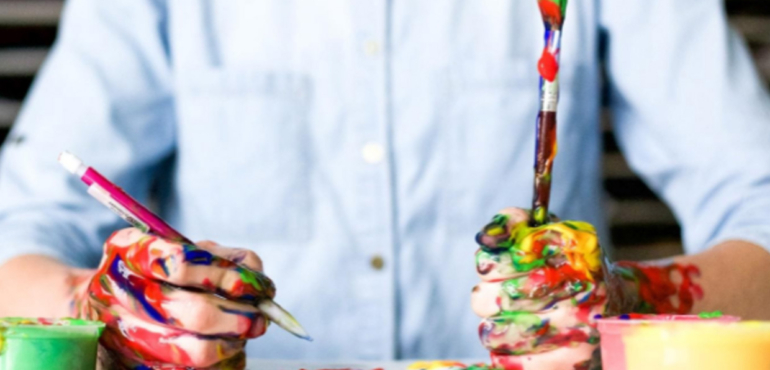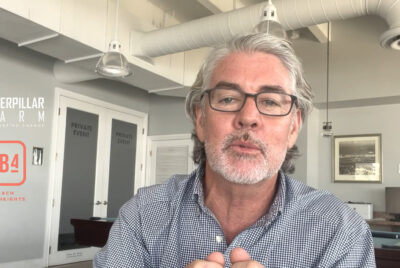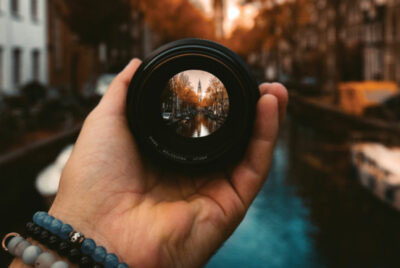Get Your Da Vinci On: What Does Art Have to do with Change Leadership?
Change management is a science, but it is also an art. As society stands poised on the brink of the unknown, the importance of authenticity, cross-functionality, and interdisciplinarity are being realized afresh. How can change leaders glean wisdom from the arts in a bid to move forward with emotional intelligence, courage, and creativity?
Many Hats
It’s probably safe to bet that when you signed up as a change manager, you did not see yourself at the helm of a ship buffeted by the storm of a global pandemic? There you were, imagining the next phase of your brilliant internal change strategy when BOOM…we don’t need to talk about what happened…and the rest is history…
Change managers wear many hats. They always have. No doubt you have experience in many roles – scientist as you study trends and bottom lines, teacher as you strive to impart a common vision to your team, psychologist as you deal with internal politics and resistance to change, and maybe even reality show host as you witness the formation and demise of various alliances on your island, and watch contestants come and go?
The multifaceted nature of change management makes it both a privilege and a challenge. Those brave enough to take it on must constantly revisit their own roles as scenarios play out. To be a change leader, one needs to become a polymath of fluid identity – like Leonardo da Vinci – scorning the idea of different “sectors” of reality and dancing deftly in and amongst as many as possible to achieve creative solutions. You need to be an agent of the ever-elusive goal of cross-functionality – aligning sectors, teams, and people into elegant powerhouses of responsive, intelligent business.
So right now, two years into the pandemic – which hat are you wearing? What is your identity? Are you allowing yourself some latitude to reflect, regroup, and reimagine? As many are postulating that we are witnessing a great reset of society, that we are poised on the brink of an entirely new “something” …who are you allowing yourself to be? Have you ever imagined yourself as an artist?
Of Art and Change Leadership
Why an artist? What do art and change management have in common? Many things! Let us ponder:
- Art requires listening and hearing, looking and seeing, touching and feeling. Good art is produced from a place of emotional intelligence, giving expression to nuanced subtexts which pass others by. Thus, the best artists are those who manage to remain brave, honest, sensitive, and agile of mind. Is the same not true for change leaders? They need to see the proverbial “elephant in the room” and engage with its presence rather than denying it in a vain bid to make it go away (this is spoken of in our recent podcast with Vodafone CEO, Vinod Kumar). Alexandra Zamolo writing about change management tools says, “To truly create real change, leaders must be willing to get down in the weeds. To get messy. To hear uncomfortable truths”.
- Art is birthed from the imagination. The artist is bold in creating a new vision of something they have seen or discerned. The same will be true for successful change managers – especially as we look out into the great unknown.
- Far from being the vague, esoteric realm that art is stereotyped to be, solid art is the result of discipline, dedication, and tenacity (don’t miss our podcast with Hannah Dasher on Thursday for a striking illustration of this). Giftedness is not enough. Likewise, a change leader who facilitates a seemingly effortless transformation in a workplace has many personal battle stories from behind the scenes.
- You get art, and you get art. Many a wall is adorned with “art” that doesn’t help the wall at all; “art” that was mass-produced on cheap paper and sold, overpriced, for a dollar at a dollar store. There is always the temptation to produce a “quick fix” to cover a blank space, though this never fools an eye for quality. Likewise, in change management, there is often pressure to “just do something, anything!”, and “something, anything” is easy to do… But is it art?
- Artworks have focal points which draw the eye, the ear, or the heart, e.g., the vanishing point on a painting, the crescendo of a symphony, the solo in a jazz piece (as discussed in our recent podcast with future of work influencer, Alan Hosking), or the climax in a novel. This focal point distills the essence of the work. Likewise, as you activate change, there will be certain areas where you will spend more time and add more detail to make the vision come alive. Simon Sinek would probably call this your “why”.
Of Medium and Message
Are you convinced that you are allowed to include “artist” as part of your personal brand? Now consider the medium/media that you prefer to create in. Artists need to become intimately acquainted with their tools to use them with creative abandon.
Look around your office (studio?) with new eyes and walk through the corridors of your company with a fresh perspective. What are your tools of organizational change? What techniques could you refine so that they no longer hamper your expression? Who are your artistic collaborators, and are they cross-functionally aligned? Do an audit. Throw out clutter, try new things, refine your use of old favourites, and be experimental. Become fluent in your chosen methods so that you can proceed unfettered. And always remember that “the medium is [part of] the message”.
Ready to Exhibit
Neither art nor change leadership exists in a vacuum. Thus, every artist and every change leader will reach the point where it is necessary to release a creative project into the public realm. At this point, your greatest assets are courage and humility. There is a moment of ineffable vulnerability just before a creative work is shared. Those who would challenge the status quo and build in broken places must bravely cross this line and face whatever reception may greet them.
As with artists, some change leaders are acknowledged immediately, others only later. Both need to guard against selling out; and both must defend their authentic voice at all costs.
As Jessica Beck has said of artists in the pandemic, “We’ve all gone inside to reflect and heal, but after this period of mourning there will be great art”.
May the same be true of change leadership.
The Change Cultivators podcast is proudly produced by CB4.






